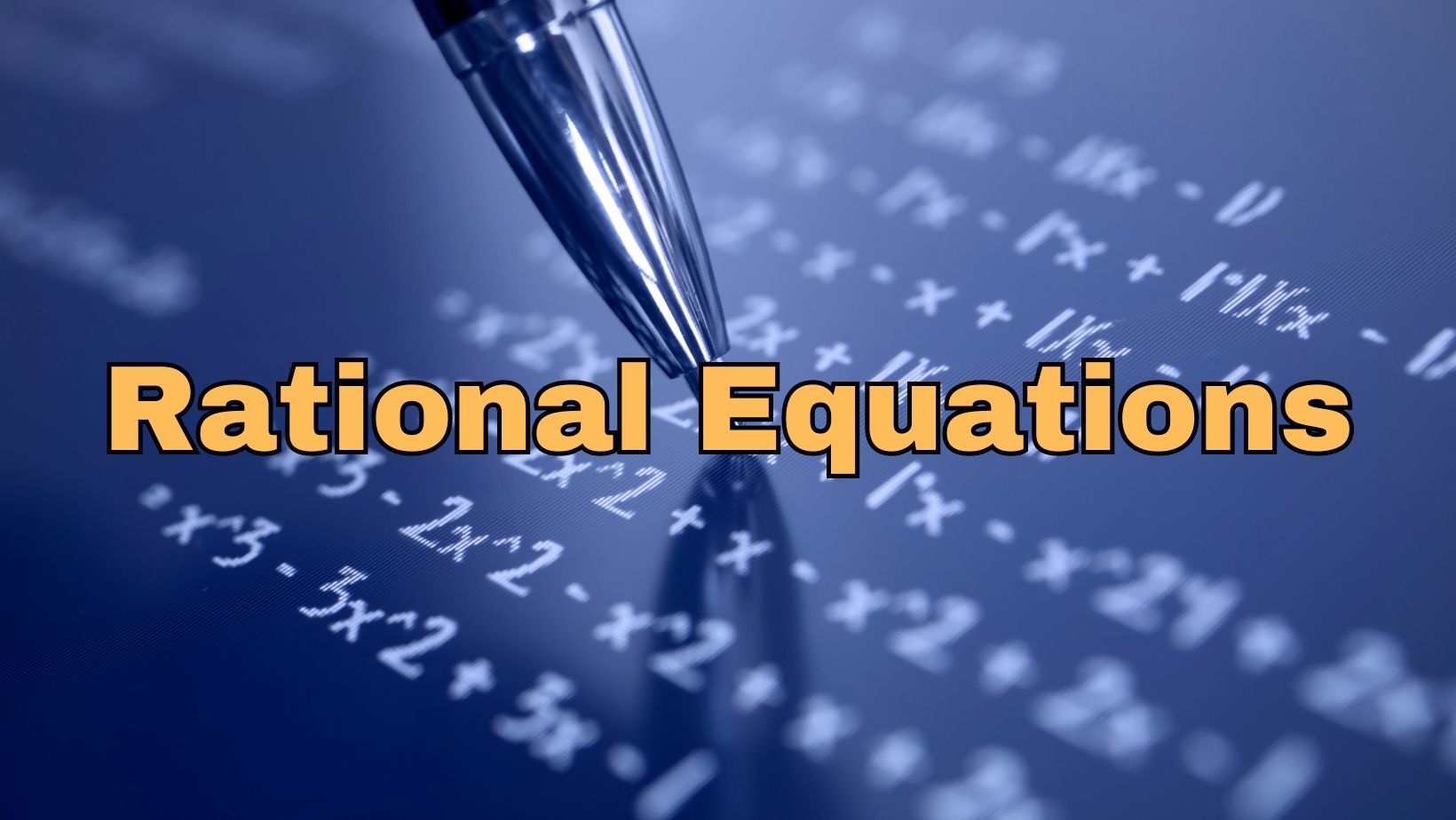Mathematics is a vast subject that contains a myriad of branches, each with its unique concepts and systems. Algebra, one of the foundational pillars of this universe, presents us with several intriguing constructs. Among these, rational equations stand as a remarkably interesting topic due to their structure, properties, and mental gymnastics they often require.
This article will delineate the concept, structure, and characteristics of rational equations and highlight the distinction between them and their close relative, rational expressions.
Understanding Rational Equations
Rational equations, by their very nature, bridge the worlds of algebra and fractions. Let’s start with rational equations definition:
It is an equation that features at least one rational expression—an algebraic expression that represents the ratio of two polynomials. The term “rational” is derived from “ratio,” underscoring these equations’ foundation in fractional operations.
For instance, the expression (2x – 3) / (5x + 1) is a rational expression, as it portrays the ratio of two polynomials, 2x – 3 (the numerator) and 5x + 1 (the denominator). Therefore, any equation that features such an expression is termed a rational equation.
Structure of Rational Equations
At the heart of rational equations lies their ability to express ratios of polynomials. A polynomial is a mathematical expression involving variables and coefficients interconnected through operations of addition, subtraction, multiplication, and positive whole-numbered exponents. The structure of rational equations consists of the following:
- Numerator and Denominator: The rational equation comprises a fraction wherein each part—numerator and denominator—is a polynomial.
- Equality: The fraction is set equal to another value, which could be a standalone number, variable, polynomial, or another rational expression.
Characteristics of Rational Equations
Rational equations have certain attributes that make them distinct:
- Polynomial Fractions:These equations involve a fraction where both the numerator and denominator are polynomials.
- Undefined Solutions:Division by zero is an undefined operation in math, hence any solution that causes the denominator to be zero is not considered a valid solution.
- Variable Solutions:The solutions to rational equations are the set of values that the variables in the equation can assume.
Solving Rational Equations
Solving rational equations can sometimes be a challenge due to their fractional nature, but the process becomes easier once one understands the basic steps. The primary goal is to eliminate the denominator, effectively freeing the equation from its fractional form, which simplifies the equation considerably.
One common method to achieve this is by multiplying both sides of the equation by the least common denominator (LCD). After this transformation, the equation becomes a simple polynomial equation which can be resolved using standard methods.
For instance, if we have a rational equation x / (x – 1) = 2, we could multiply both sides by (x – 1) which is the denominator of the rational expression. This results in a simple algebraic equation x = 2*(x – 1), which can be solved conventionally.
Rational Equations vs. Rational Expressions: The Differences
Although rational equations and rational expressions share similarities—most notably their fractional structure—there are significant differences:
- Equality: Rational equations contain an equality (equal-to symbol), whereas rational expressions are simply the ratio of two polynomials without equality.
- Solutions: Rational equations can be solved to find values of the variables involved. On the other hand, rational expressions are simplifications or representations of ratios, and their values may vary depending on the variable’s value.
Conclusion
Rational equations, as their name hint, unlock the power of ratios within the algebraic framework. They allow us to encapsulate complex relationships between variables and are pivotal tools in fields demanding the analysis of ratios or relative change. Understanding them not just expands our mathematical toolkit but also fuels our problem-solving dexterity within a multitude of real-world situations. Meanwhile, the inherent differences between rational equations and rational expressions further underline the importance of context and precision in our mathematical journey.
